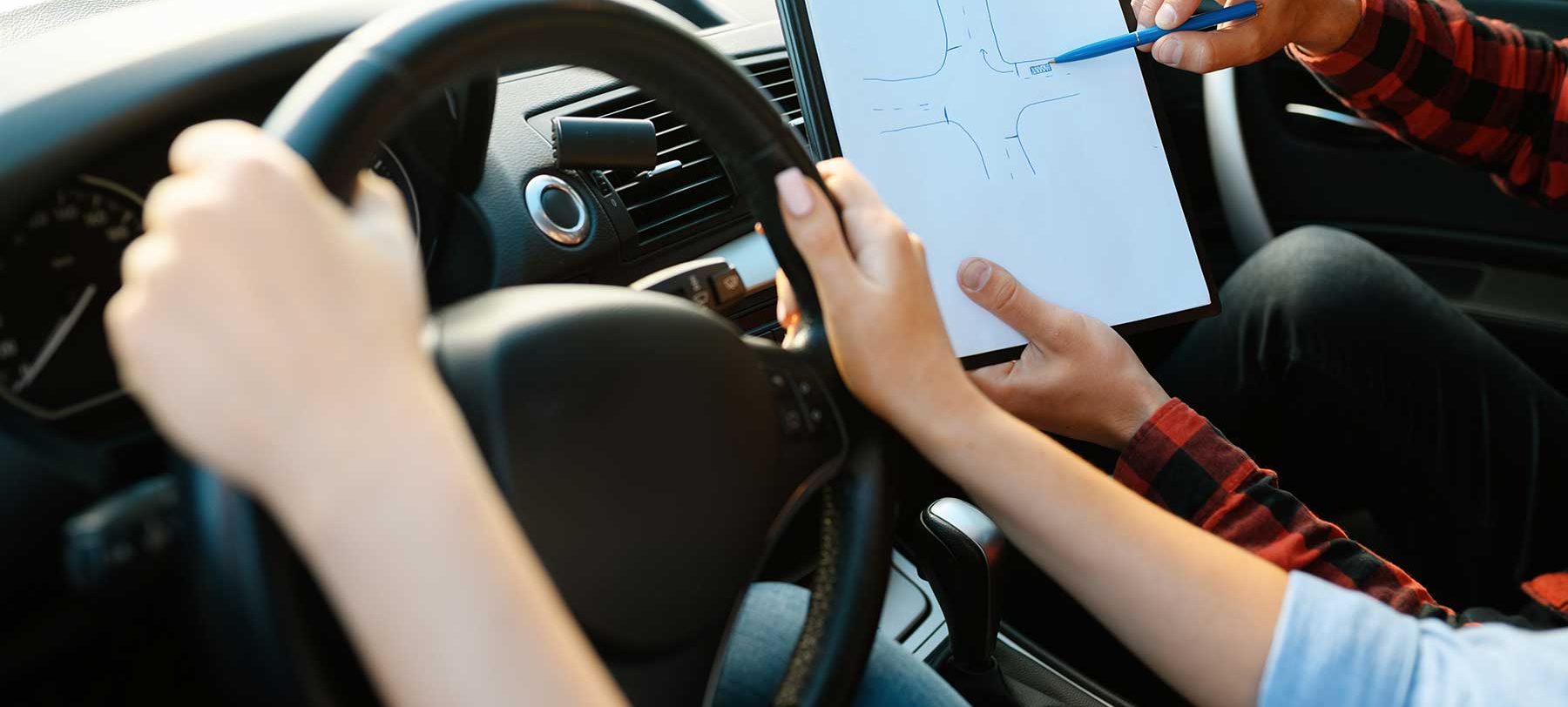Welcome, reader! If you’re struggling with driving anxiety, you’re not alone. Many feel anxious or stressed while driving. But, there’s good news. You can deal with this stress using expert advice and the right strategies.
The goal here is to help you reduce your driving anxiety and become a more confident driver. We’ll cover different ways to manage stress, making your driving experience better and safer.
Key Takeaways
- Driving anxiety is common but manageable.
- Expert advice can provide effective coping strategies.
- Understanding and addressing anxiety triggers is crucial.
- Building confidence over time is key to success.
- Staying calm and prepared enhances driving comfort.
Introduction to Driving Anxiety
Driving anxiety is something that many people face. It comes from different psychological factors. This can lead to feelings of nervousness, dread, or even panic when driving. It’s important to learn about these triggers to overcome driving anxiety.
It’s crucial to know that many individuals experience driving anxiety. You are not alone in this. This feeling can be caused by not feeling confident in your driving, previous accidents, or general anxiety. These issues make the fear of driving worse.
Each person may be affected differently by this anxiety. Some may avoid certain roads, while others feel physical symptoms like sweating or a racing heart. Knowing these signs and what causes them can help reduce driving anxiety with the right strategies.
- Psychological Underpinnings: Fear of losing control, accidents, and social anxiety can be big factors in driving anxiety.
- Common Triggers: Things like heavy traffic, new routes, or bad experiences can spark anxiety.
- Prevalence: Many people report feeling this fear, proving it’s a significant issue to tackle.
It’s good to remember that you can beat driving anxiety. There are many ways to help, like behavioral strategies, mindfulness, or getting professional support. These approaches can help you lower your anxiety and feel better about driving.
Understanding the Causes of Driving Anxiety
Driving anxiety can have many causes. It’s important to know these reasons to deal with it well. There are three main causes: fear of driving, past bad experiences, and general anxiety and stress.
Fear of Driving
The worry about driving often comes from feeling the road is dangerous. For some people, even thinking about traffic is scary. They might fear getting in accidents or not being able to control their car. Recognizing this fear is the first step to overcoming it.
Past Experiences and Trauma
If someone has been in a car accident before, it could make them scared to drive again. These past experiences can cause fear or bad memories when they try to drive. It’s key to face these past events to start healing anxiety.
General Anxiety and Stress
Ongoing anxiety and stress can make driving fears worse. This is especially true for those dealing with high stress or an anxiety disorder. Handling overall stress and anxiety is crucial to deal with driving anxiety. This helps make driving safer and more comfortable.
Recognizing Driving Anxiety Symptoms
First, knowing the signs of driving anxiety helps deal with it. It might be tough, but understanding anxiety’s signs can help manage it better.
Physical Symptoms
Physical signs of stress are most obvious with driving anxiety. They can involve:
- Increased heart rate
- Sweating
- Trembling or shaking
- Shortness of breath
Emotional Symptoms
Feeling intense fear or dread is common with driving anxiety. Key emotional signs include:
- Excessive worrying about driving
- Feelings of panic or intense fear
- Preoccupation with potential dangers on the road
Behavioral Symptoms
Actions such as avoidance can deeply affect your daily life. Common behavioral signs are:
- Avoiding driving situations altogether
- Taking longer routes or only driving short distances
- Frequent checking and re-checking of driving routes to avoid anxiety-provoking scenarios
Here’s a quick guide for spotting driving anxiety signs:
| Category | Symptoms |
|---|---|
| Physical Signs of Stress | Increased heart rate, sweating, trembling, shortness of breath |
| Emotional Symptoms | Excessive worrying, intense fear, preoccupation with dangers |
| Behavioral Indicators | Avoidance of driving, opting for longer or shorter routes, repetitive checking of routes |
Recognizing stress, fear, and avoidance helps you manage driving anxiety better.
How to Handle Driving Anxiety
Dealing with driving anxiety can be tough, but there are ways to handle it. By learning to control your stress, you can start feeling more confident behind the wheel. Through my own journey, I’ve picked up some tips that really work in calming my nerves while driving.
Learning calming strategies has been key for me. Things like taking deep breaths and relaxing my muscles have helped me focus better. I’ve also used mental imagery, like imagining myself driving safely, to boost my confidence.
To deal with driving stress, it’s important to know what sets it off. For some, things like heavy traffic or driving at night are big stressors. Facing these fears little by little through exposure can help lessen their impact. Slowly challenging myself and taking longer drives has made me more confident over time.
Getting support is crucial too. Talking with friends, family, or a trained professional about your worries can make a big difference. It not only offers a sense of normalcy but can provide fresh insights and advice. I found that working with an anxiety expert has helped me develop coping strategies that fit my needs.
Using these strategies consistently has helped me battle my driving fears. Everyone’s journey is different, so it’s about finding what works best for you. The most important things are to be patient and keep at it. With time and effort, you can learn to manage your driving anxiety.
Building Driving Confidence Over Time
Getting confident at driving takes time. It’s best to start in calm places. Here’s how you can feel more relaxed as you drive more.
Start with Short Drives
Begin by driving short distances. These easy trips help you get to know your car and driving. As you get more comfortable, you can drive further and tackle harder routes.
Choose Familiar Routes
Drive on roads you already know. This will make the experience less stressful. You’ll feel more in control and your skills will get better.
Drive During Off-Peak Hours
Try driving when the roads are less crowded. This means fewer cars and less stress. It’s a good time to focus on getting better at driving. Gradually, this will make you more confident behind the wheel.
Remember, it takes time and practice to build your driving confidence. Use the tips above often to become a more confident driver step by step.
Preparing Yourself Before Driving
Dealing with anxiety before starting the car can change your whole driving experience. It’s about being prepared before you even get in. By taking charge and making a solid pre-drive plan, you can boost your confidence. Start by doing these key things to get ready for a worry-free drive:
Familiarize with Your Vehicle
It’s crucial to know your car inside out. Make sure you check and understand key features. This includes how to use the controls, set your mirrors right, and check that all lights work. Getting to know your car well will make you feel more at ease when driving.
Check Your Environment
Setting up a safe and comfy driving space is important. Adjust your seat and clear out any distractions before you go. Also, have a good look at the route you’ll be taking. Knowing the weather and traffic conditions before you leave will also help make your drive smoother.
By taking care of these steps, you gain more control over your drive. This helps keep anxiety at bay, making your trip both safer and more pleasant.
Staying Calm While Driving
Staying calm while driving is key for a safe trip. Using effective techniques can really lower stress. Happy drivers make safer roads.
Deep Breathing Exercises
Deep breathing is great for relaxation. It slows your heart and calms you. Follow these steps to breathe deeply while driving:
- Inhale deeply through your nose for a count of four.
- Hold your breath for a count of four.
- Exhale slowly through your mouth for a count of four.
- Repeat this until you feel calmer.
Mindfulness Techniques
Mindfulness keeps you focused while you drive. It’s all about staying in the present. Here’s how to be mindful behind the wheel:
- Feel the steering wheel in your hands.
- Watch the road, traffic, and weather without judging.
- If you get distracted, concentrate on your breath and driving again.
Listening to Calming Music
Calming music aids in relaxation. Make a playlist of gentle tunes that you like. It will make your drive more peaceful:
- Pick music that’s slow and has few words to keep you calm.
- Try genres like classical, jazz, or ambient music for relaxation.
- Set the volume at a level that lets you hear the road clearly.
Using these techniques can make you a better, calmer driver. This creates a safer and more enjoyable time for everyone on the road.
Gradual Exposure to Driving Situations
Gradual exposure therapy is effective for beating driving fears. It starts with easy situations, then moves to harder ones. I set the pace, easing myself into different driving challenges slowly. This way, I get used to each step comfortably.
Let’s say I start by driving in my neighborhood, a place I know well. Then, I gain enough courage to drive in busier areas. Finally, I tackle highways. With each step, my fear lessens as I grow used to driving more and more.
Here is a structured approach for exposure therapy:
- Start by driving in a quiet and familiar area.
- Gradually increase the distance and complexity of the routes.
- Introduce driving during slightly busier times.
- Incorporate highway driving as comfort grows.
- Practice handling challenging conditions, like night or rain, once comfortable.
This gradual method is key in overcoming driving fears. It’s important to keep at it and celebrate small wins. Doing this builds up my confidence behind the wheel.
| Stage | Activity | Outcome |
|---|---|---|
| 1 | Neighborhood Driving | Feel secure in familiar environments |
| 2 | Busy Streets | Adjust to moderate traffic slowly |
| 3 | Highway Driving | Build confidence in fast-paced settings |
| 4 | Challenging Conditions | Equip to handle diverse driving situations |
The aim is to take slow steps and grow my confidence. Exposure therapy is about steady progress, not speed. It’s about improving myself over time.
Using Positive Affirmations
Managing anxiety is often about how you talk to yourself. Adding positive affirmations to my day has made a big difference. It helps me stay calm and positive, especially while driving in tough situations.
Positive affirmations act as a mental boost. They help me see my strong points instead of my fears. Phrases like “I am powerful” and “I am confident at driving” can change the game. When I say these phrases, it stops the bad thoughts that cause anxiety.
Here are some driving-specific affirmations to start with:
- I am capable and calm while driving.
- Every mile I drive makes me more confident.
- I trust my skills and judgment behind the wheel.
- Driving is a safe and manageable task for me.
Using these affirmations daily, at all times, makes me better at staying cool and sure while driving. It’s key to really believe in these affirmations. They offer the mental boost I need to fight off driving anxiety.
Now, let’s compare the effects of negative and positive affirmations on driving anxiety:
| Negative Affirmations | Positive Affirmations |
|---|---|
| “I can’t handle driving in traffic.” | “I navigate through traffic safely and calmly.” |
| “Driving long distances is too stressful for me.” | “I am relaxed and in control during long drives.” |
| “I’m always nervous when I drive.” | “I feel confident and calm while driving.” |
With affirmations, I can pay more attention to driving and lower stress. So, encouraging myself is crucial in beating driving anxiety.
Seeking Professional Help
When we’ve tried everything but still struggle, it’s crucial to consider professional aid. Engaging with anxiety treatment experts offers personalized strategies and specific guidance for your recovery. This support can alleviate the feeling of facing this alone.
Therapists Specialized in Anxiety Treatment
Anxiety therapists bring a wide range of expertise and techniques. They work with you to understand what’s causing your fear of driving. Together, you’ll create a plan that fits your specific needs.
They often use methods such as cognitive-behavioral therapy (CBT) and exposure therapy. These are proven to help reduce anxiety. Learning relaxation skills can also help calm your mind.
Driving Schools Specialized in Anxiety Management
Specialized driving schools are another key resource. They have tailored courses for people with driving anxiety. You’ll find yourself progressing at your own pace with strategies that help boost your confidence while driving.
By combining these services, you get a holistic approach. It blends the benefits of therapy with the practical skills needed for driving.
Practical Driving Tips for Anxiety Sufferers
Driving with anxiety can be hard, but a few practical tips can help a lot. Let’s look at simple steps to make your driving experience better.
Practice Defensive Driving
Defensive driving is key for anyone with driving anxiety. Watch other drivers and look for possible dangers. Keep a safe distance from cars, always obey signs, and stay at the right speed. These steps boost your safety and cut down on stressful situations.
Limit Distractions in the Car
Reducing distractions is important for staying focused and calm. Turn your phone to silent or use a hands-free tool. Set up your mirrors and seat comfortably before you drive. Avoiding a cluttered car helps keep your mind clear.
Pull Over if Feeling Overwhelmed
Sometimes, you just need a break from driving if it gets too much. It’s fine to pull over somewhere safe. Then, take deep breaths and stretch to calm down. Looking after your mental health while driving is crucial.
By using defensive driving, cutting distractions, and knowing when to take a break, you can drive with more confidence. These small habits add up to a smoother and less anxious driving journey.
Conclusion
As we wrap up this guide on fighting driving anxiety, we see change is possible. By using the right methods and mindset, we can cut down our fear. We’ve learned to recognize the signs and how to fight them. Strategies like starting slow and getting professional help are key.
Taking little steps is how you build your driving confidence. Things like deep breaths and getting to know your car are important. They help create a soothing driving space. Together, they calm your mind and remind you that anxiety doesn’t control you.
This path to peaceful and secure driving is yours to take. It needs small wins and lots of trying. Follow the tips, know what you need, and seek help if you must. Doing this can change your fear into joy on the road.







